The Raid on Yarmouth : 3 November 1914
- Home
- World War I Articles
- The Raid on Yarmouth : 3 November 1914
The raid took place on 3 November 1914, and was an attack by the Imperial German Navy on the British North Sea port and town of Great Yarmouth by the German battlecruiser squadron under the command of Admiral Franz von Hipper. The intention was to lay mines off the coast of Yarmouth and Lowestoft and to shell Yarmouth.
Little damage was done to the town since shells only landed on the beach, but as German ships were laying mines offshore they were interrupted by the patrolling minesweeper HMS Halcyon and two old destroyers HMS Lively and Leopard. Three submarines HMS E10, D5 and D3 that were inside the harbour—moved out to join the chase, but D5 struck a mine and sank at 08:30 am.
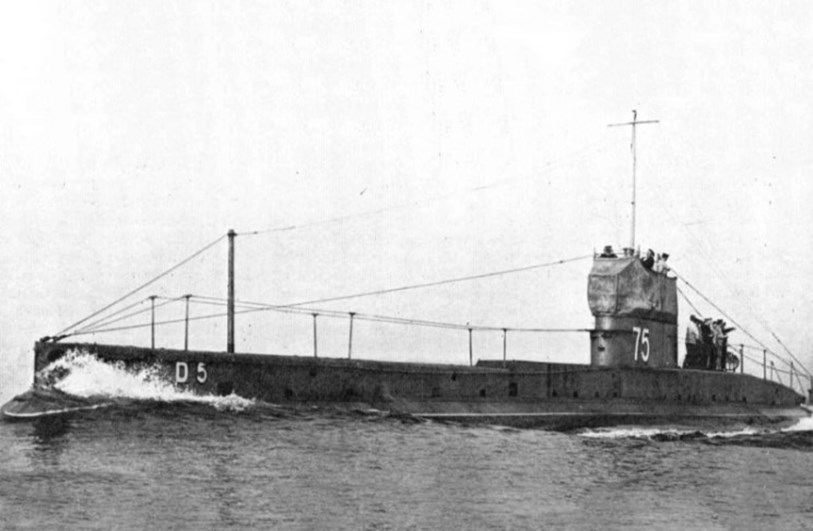
HMS D5 was one of eight D-class submarines built for the Royal Navy during the first decade of the 20th century. D5 met her fate off Great Yarmouth sunk by a German mine laid by SMS Stralsund. There were only five survivors.
Using the WFA's Pension Records search facility on the WFA web site (which links to the Fold3 records provided by our partners Ancestry.co.uk), it has been possible to locate virtually all of the 21 men who lost their lives onboard Submarine D5. Below are the images of these records, which show the wide variety of types of records and the large amount of information that can be gleaned from these Pension Records.
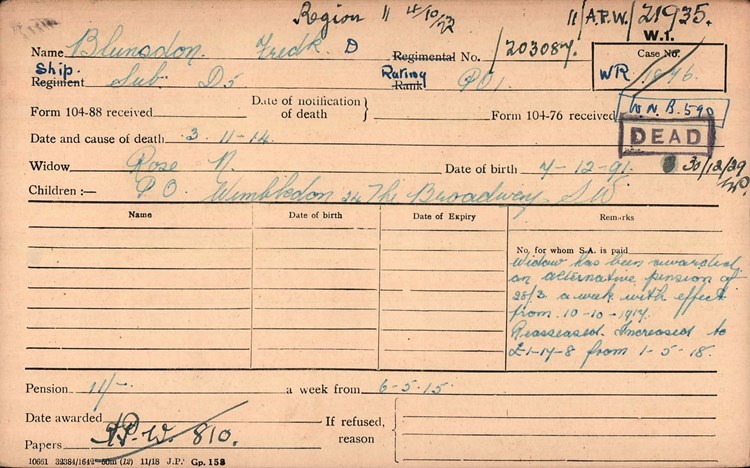
Above and below: Pension Card / Naval Ledger of Frederick Drury Blunsdon
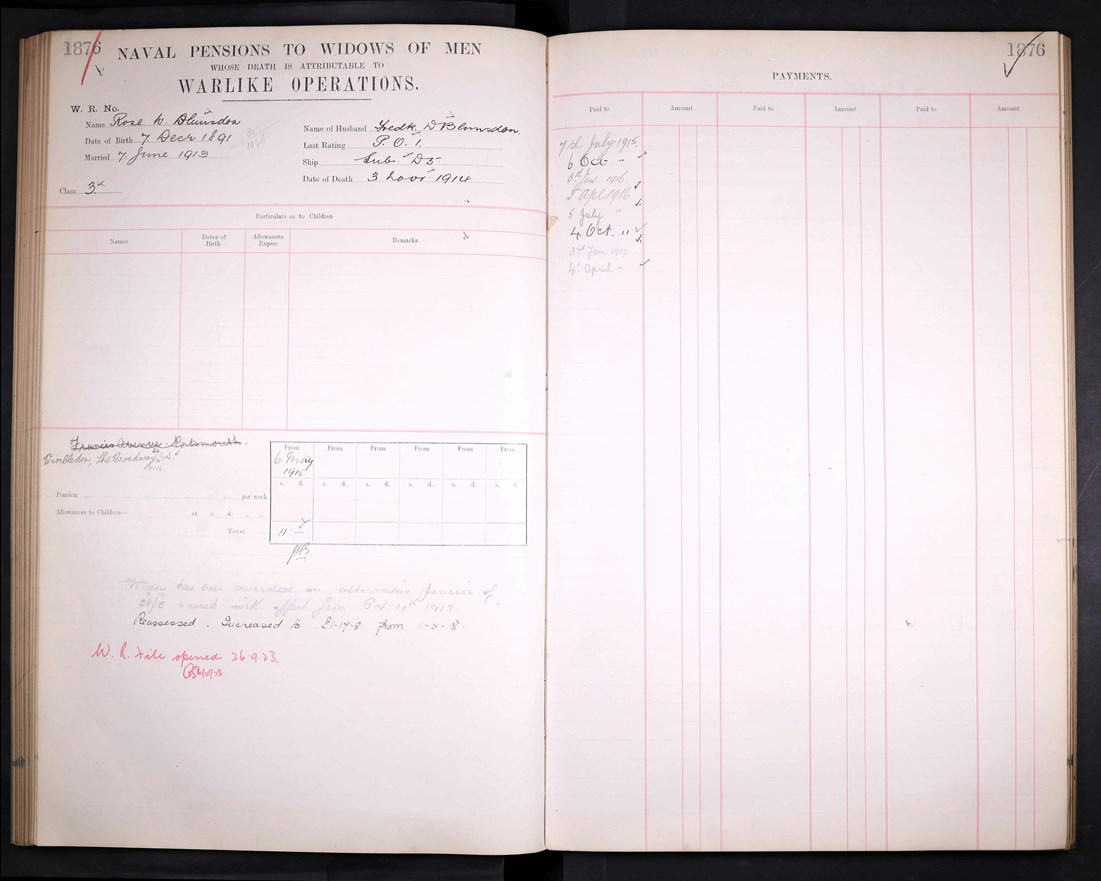
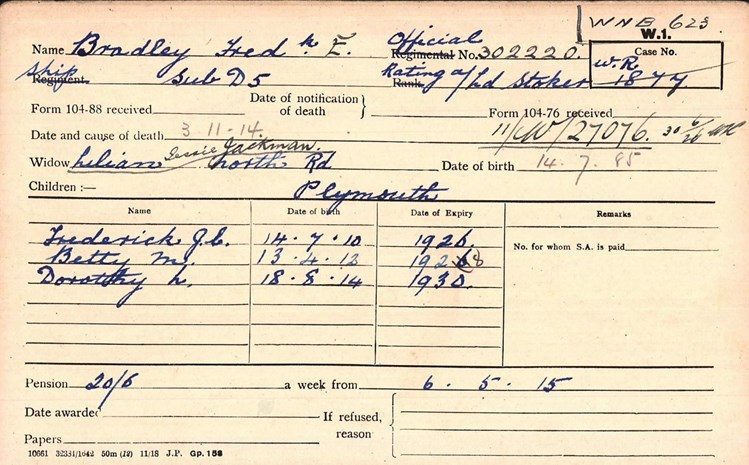
Above and below: Pension Card and Pension Ledger of Frederick Ekin Bradley
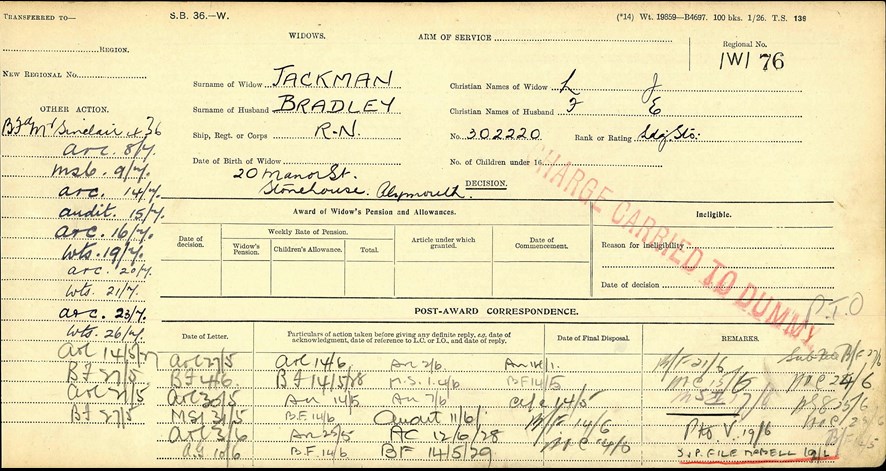
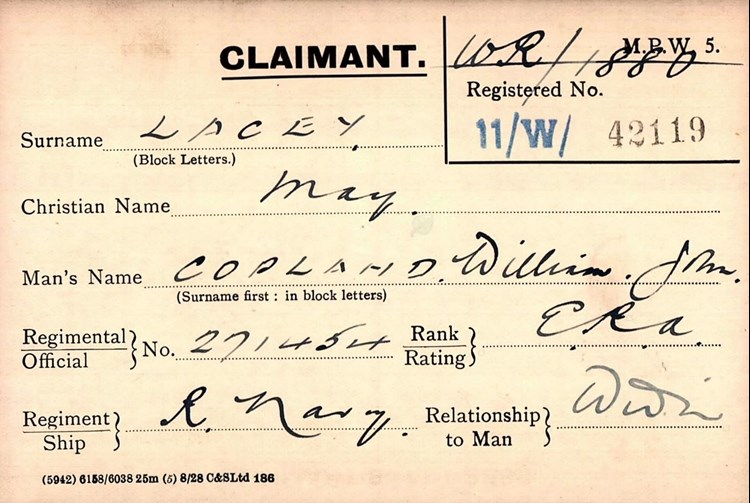
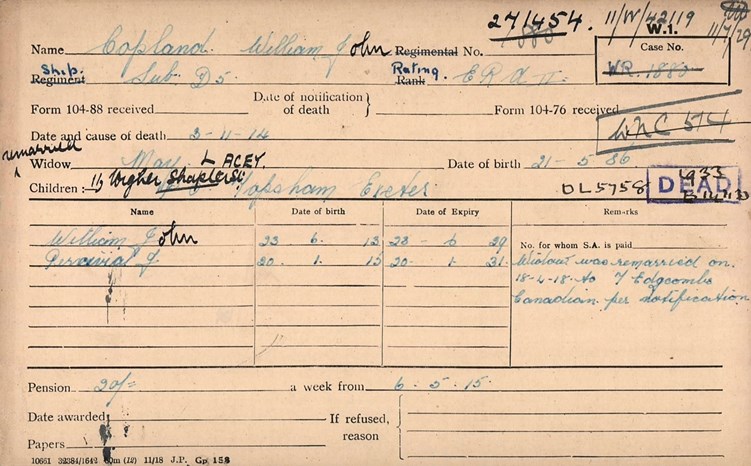
Above and below: Two Pension Record Cards relating to William John Copland (also naming his brother, Henry who had been killed three months earlier on board HMS Amphion)
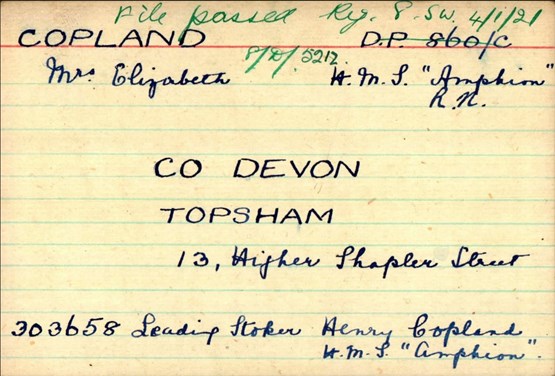
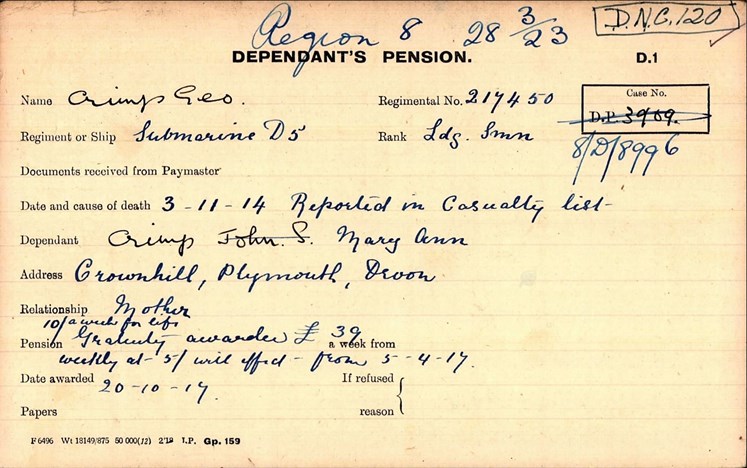
Above and below: The Pension Record Card and (damaged) ledger of George Crimp
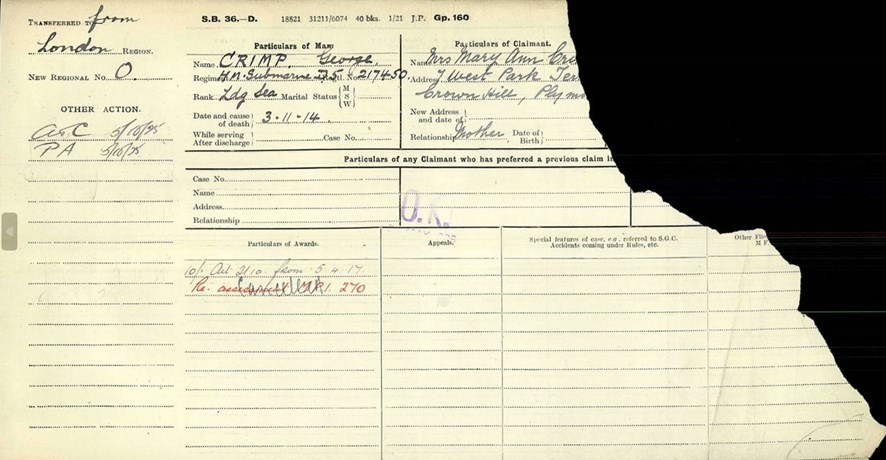
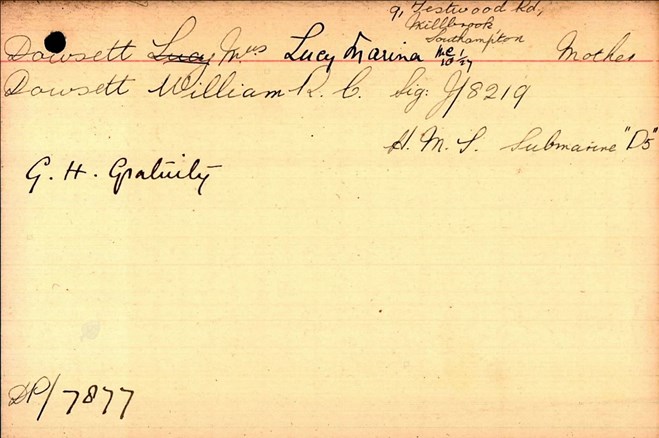
Above: Pension Record Card of William Dowsett
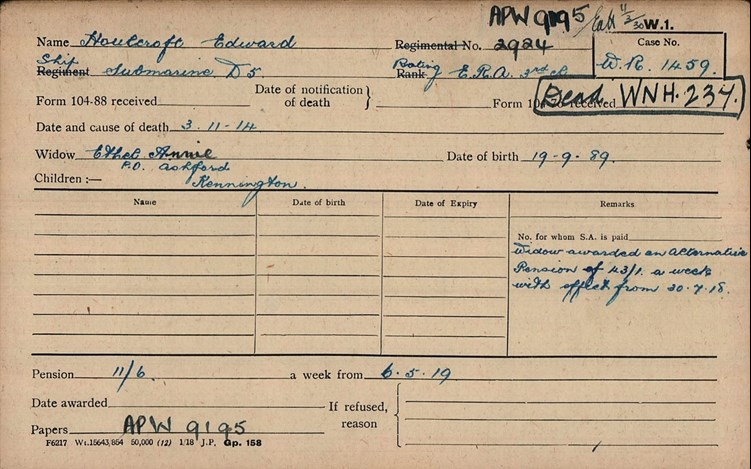
Above and below: Two Pension Record Cards for Edward Houlcroft
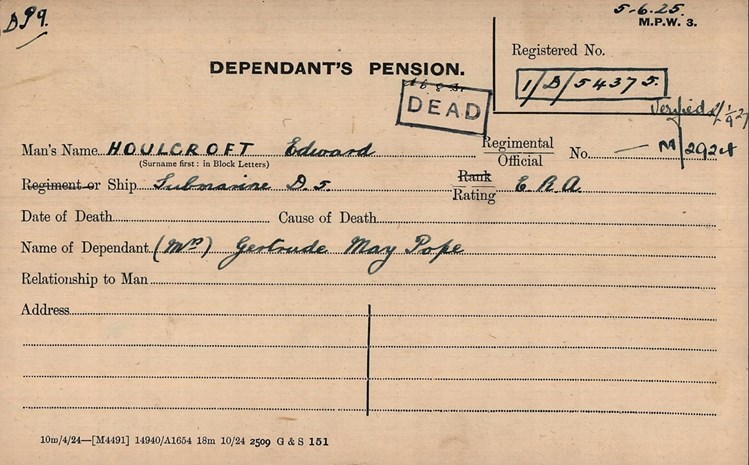
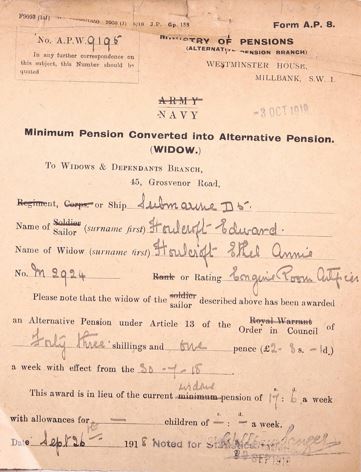
Above: A Naval Ledger for Edward Houldcroft has an interesting attachment pinned to the original ledger page.
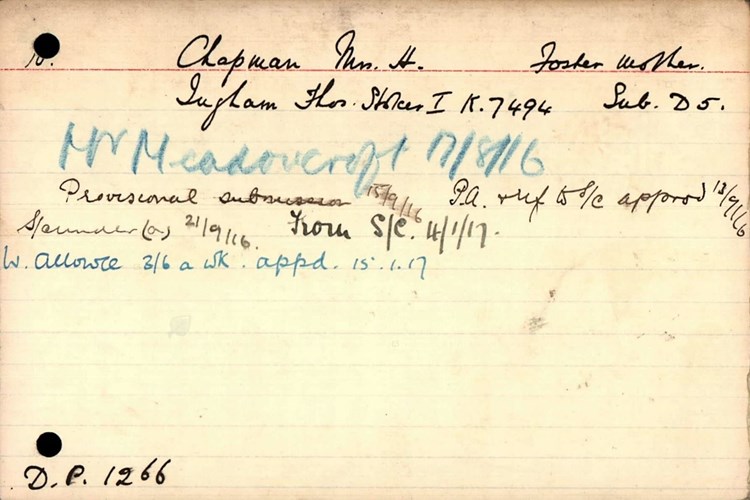
Above: A Pension Record Card for Thomas Ingham - showing the claimant to be his foster mother.
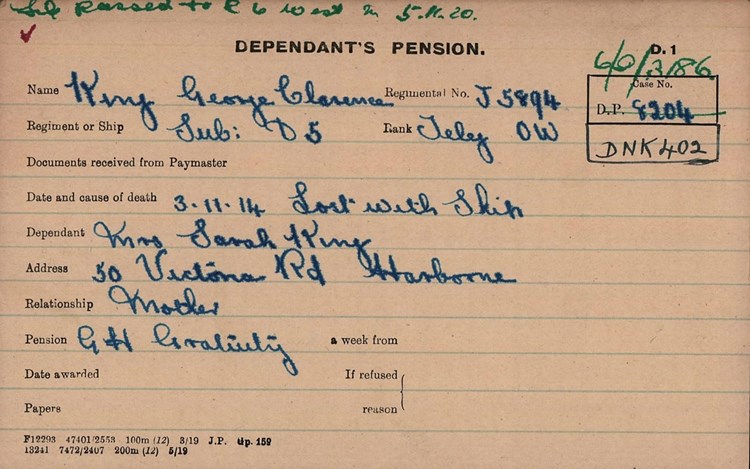
Above: A Pension Record Card for George Clarence King
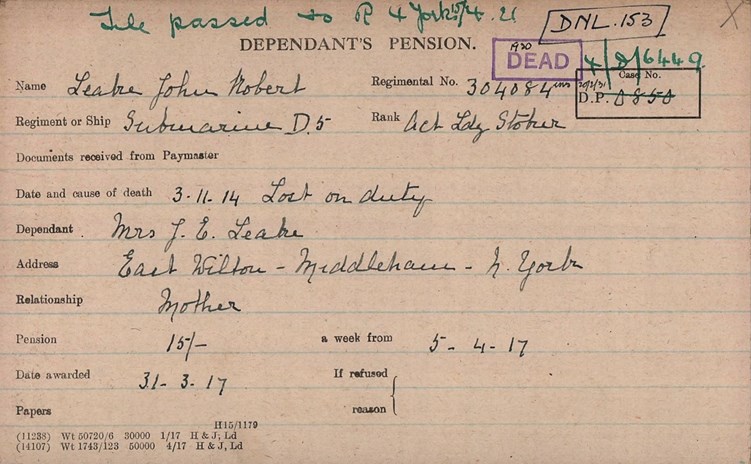
Above: A Pension Ledger for John Robert Leake
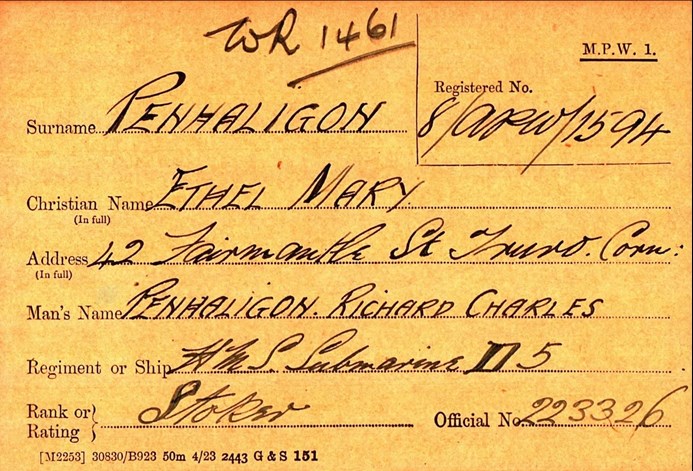
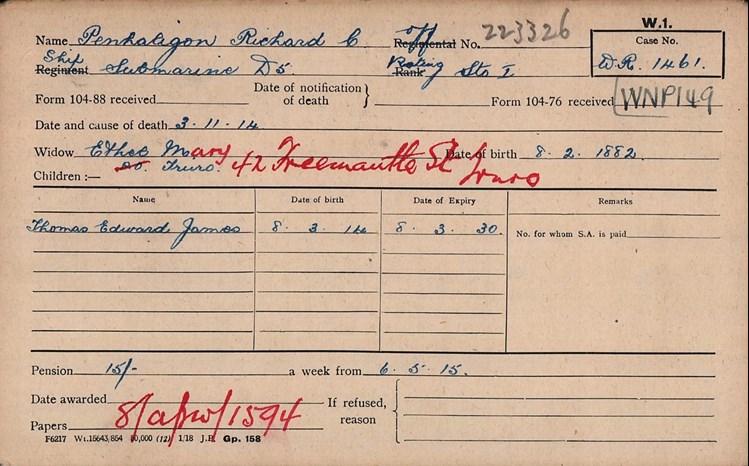
Above: A Pension Record Cardfor Richard Charles Penhaligon
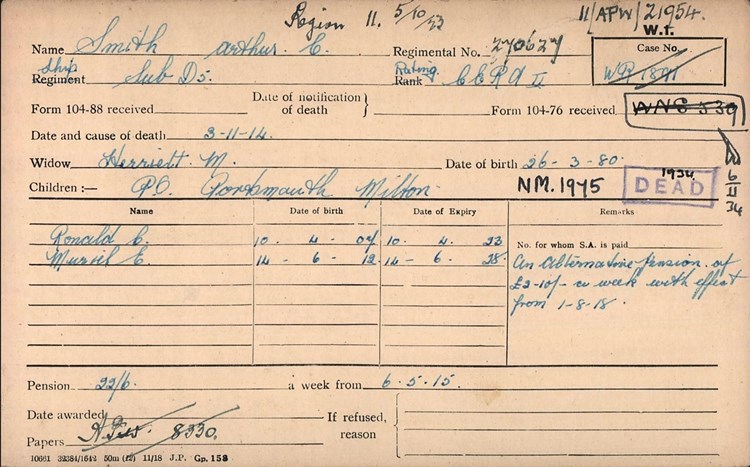
Above: A Pension Record Card for Arthur Cecil Smith
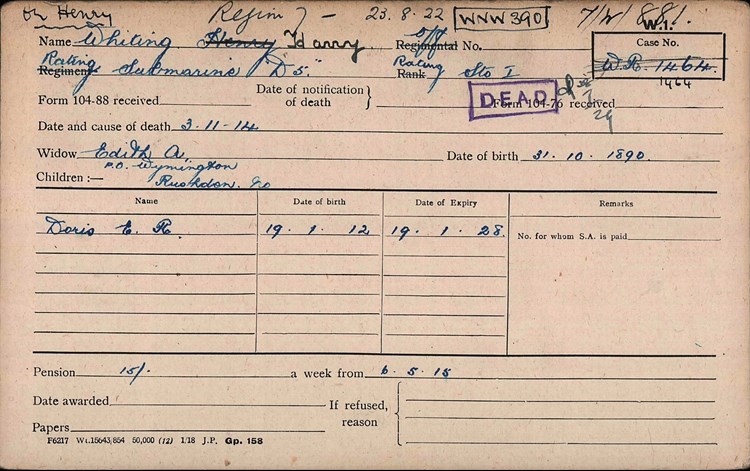
Above: A Pension Record Card for Harry Whiting
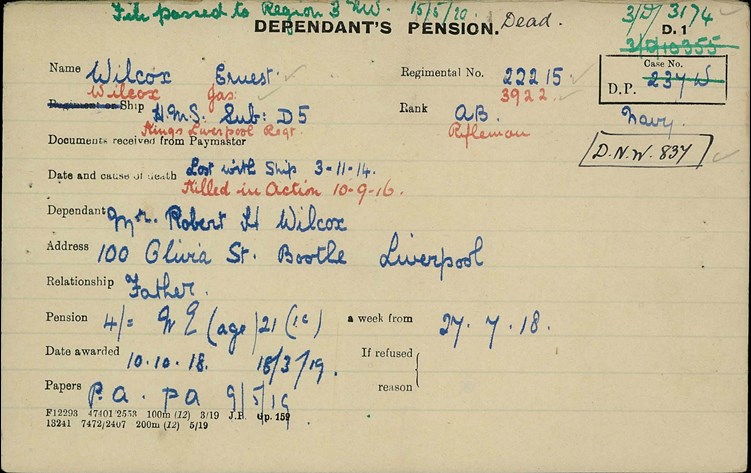
Above: A Pension Record Card for Ernest Wilcox, which also reveals his brother, James, was killed later in the war whilst serving with the Kings Liverpool Regiment.
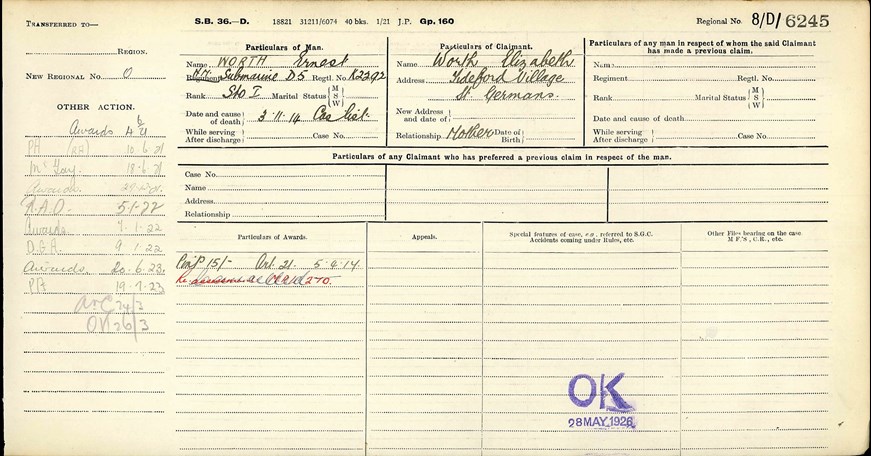
Above: A Pension Ledger for Ernest Worth
These records clearly show the value of the search facility and the ability to pull together the records of men who were lost in a particular action.
Article contributed by Robert Stone
(Bob is one of the many WFA volunteers currently working on 'Project Hometown')
Read More:
How to use the WFA's Pension Records to locate naval fatalities





